PUBLISHER: Amy Marson CREATIVE DIRECTOR: Gailen Runge ACQUISITIONS EDITOR: Roxane Cerda MANAGING EDITOR: Liz Aneloski EDITOR: Katie Van Amburg TECHNICAL EDITOR: Alison M. Schmidt COVER/BOOK DESIGNER: April Mostek PRODUCTION COORDINATOR: Tim Manibusan PRODUCTION EDITOR: Jennifer Warren ILLUSTRATOR: Linda Johnson PHOTO ASSISTANT: Mai Yong Vang STYLE PHOTOGRAPHY by Lucy Glover and INSTRUCTIONAL PHOTOGRAPHY by Mai Yong Vang of C&T Publishing, Inc., unless otherwise noted Published by C&T Publishing, Inc., P.O. Box 1456, Lafayette, CA 94549 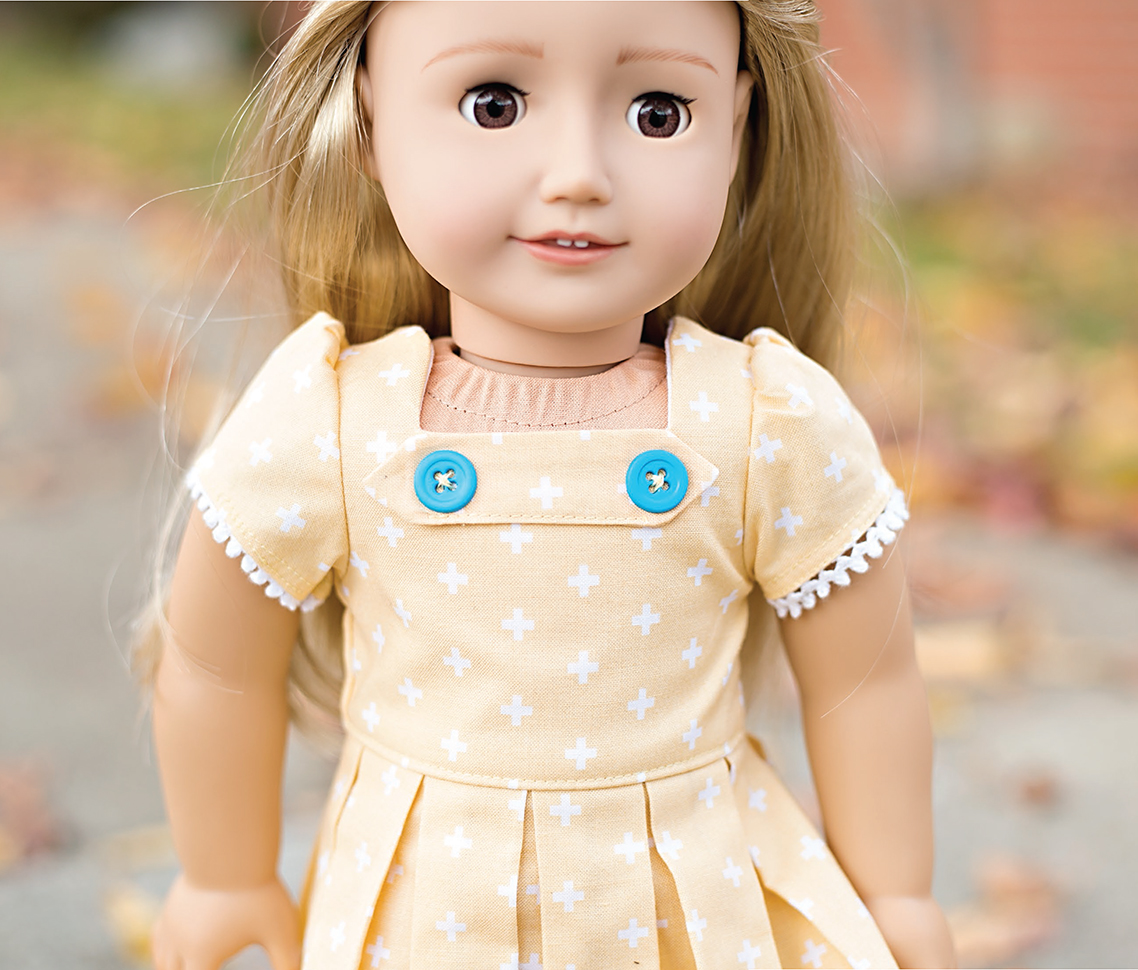 Dedication This book is dedicated to all doll dressmakers, young and not so young alike. I hope you love sewing these dresses as much as I loved creating them. May this book help you to keep your dollsor the dolls of your daughters, granddaughters, nieces, and loved onesall impeccably dressed. Acknowledgments A warm, heartfelt thanks to my husband, who has always believed in me, and to my children, for their patience, encouragement, and love.
Dedication This book is dedicated to all doll dressmakers, young and not so young alike. I hope you love sewing these dresses as much as I loved creating them. May this book help you to keep your dollsor the dolls of your daughters, granddaughters, nieces, and loved onesall impeccably dressed. Acknowledgments A warm, heartfelt thanks to my husband, who has always believed in me, and to my children, for their patience, encouragement, and love.
My sincere thanks to the following individuals and companies: My students, whose enthusiasm for sewing makes me smile and inspires me to keep creating. Its such a privilege to be a part of your sewing journey. My friend Bee (who sells her wares in her Etsy shop, A Bee Line), for using her wonderful cobbler skills to make several matching pairs of shoes for me to use in my book. Roxane, Liz, Gailen, Katie, Alison, Lucy, Mai, April, Linda, Jennifer, and everyone at C&T whose talent, expertise, and hard work helped make my book amazing and beautiful. Dear Stella, Riley Blake Designs, and Timeless Treasures Fabrics, for providing me with gorgeous fabric with which to create many of these cute doll dresses. C&T Publishing, for giving me the opportunity to create this book.
FOREWORD A FEW THOUGHTS ABOUT DESIGNING FOR DOLLS Design it well. Choose high-quality fabric, add delicate details, and keep a consistent scale. Complete each step carefully and to the best of your ability, and your designs will get noticed. Choose fabric that is appropriate for the design, has a soft hand, drapes well, and has an appropriate print scale. Always center any distinct motif onto the bodice front, especially with larger-scale prints. Simplicity is the keynote of all true elegance. Coco Chanel Dont underestimate the power of a simple, classic look; styles that stand the test of time do so for a reason. Simplicity is the keynote of all true elegance. Coco Chanel Dont underestimate the power of a simple, classic look; styles that stand the test of time do so for a reason.
Choose a gorgeous fabric and allow the design to speak for itself. Understanding color and its effects on a design will empower you to utilize color in many wayssuch as creating mood, optical illusions, and emphasistransforming the ordinary into the extraordinary. According to The Vogue Sewing Book, trims are the mark of a creative seamstress. Paying special attention to detail enables you to elevate your sewing to the next level. A doll dress can have great details, setting it apart from other designs. When looking for lace and trims, choose micro trims that will maintain the scale, giving your doll dress both harmony and balance.
Fit matters. The fit not only affects the overall look of a dress but also things like its drape and silhouette line. Try the dress on your doll as you sew. This will help you make any adjustments to the dress to fit your doll. The fabric choice affects the fit. Its best to use finer, lightweight quilting cottons.
Avoid thicker, rough-feeling quilting cottonsthey add bulk to each seam and may cause a fit issue. These fabrics will negatively affect the lines and drape of a design. Instead, look for soft-feeling cottons with a higher thread count. In other words, use a higher-quality fabric to achieve a better-looking dress. You cant use up creativity. The more you use, the more you have. Maya Angelou You are a creative artist each time you sew.
Interview the trims and fabrics as you plan your doll dress. Oftentimes, I end up with two or three dress ideas during the interview process. This process can be funtake your time choosing! After all, its this creative process that brings us our love of sewing. ErinIntroduction This book is written for the doll dressmaker who has made many doll dresses and has a firm understanding of sewing basics, such as gathering, sewing center back closures, and finishing seam allowances. This is not a book for learning the basicsrather, it is a doll clothes pattern book. However, I invite you to join my Facebook sewing group, where you can ask sewing questions and get help sewing these patterns (see About the Author).
Many of the sewing techniques are repeated in one or more dresses within Doll Dress Boutique. Instead of repeating the same instructions within each project, the detailed instructions are provided in Chapter One: General Sewing, and a page reference is given within the project instructions. After sewing a few dresses with the same construction techniques, you may not need to refer to the tutorials as often, especially as you become a seasoned doll dressmaker. This structure enables you as the dressmaker to mix and match design elements with ease. Suggested Fabrics Lightweight woven cotton is ideal for making doll dresses (including the lining). Thread Choice Be sure the thread you choose blends in or matches well with the fabric. Thread Choice Be sure the thread you choose blends in or matches well with the fabric.
Otherwise the thread may stand out in a negative way. If you want the topstitching detail to be highlighted, choose a complementary or contrasting thread that coordinates well with the fabric. Sewing Levels Advanced beginner
Advanced beginner  Intermediate
Intermediate  Advanced Patterns The dolls shown in this book have a 10 chest and 10 waist. The dresses are designed for the popular brand of 18 dolls, but the more fitted designs may not fit the older versions of these dolls. The patterns are printed on both sides of the pullout sheet, so you will need to make a new copy, either by tracing or photocopying. Print (or trace) the patterns onto freezer-paper sheets. Print (or trace) the patterns onto freezer-paper sheets.
Advanced Patterns The dolls shown in this book have a 10 chest and 10 waist. The dresses are designed for the popular brand of 18 dolls, but the more fitted designs may not fit the older versions of these dolls. The patterns are printed on both sides of the pullout sheet, so you will need to make a new copy, either by tracing or photocopying. Print (or trace) the patterns onto freezer-paper sheets. Print (or trace) the patterns onto freezer-paper sheets.
Iron the freezer paper, waxy side down, directly onto the fabric; cut out the pattern pieces; and peel the freezer paper off the fabric. These freezer-paper patterns can be used several times and wont leave any residue on the fabric. Though you can print and cut out the patterns, I still recommend tracing them to prevent unnecessary wear on your fabric scissors. Use Pellon 830 Easy Pattern or Swedish tracing paper to trace the patterns. The tracings will enable you to be more accurate when cutting out the fabric pieces and to fussy cut like a rock star. These pattern tracings can last a lot longer than paper patterns. CHAPTER ONE General Sewing Finish the seam allowances of any exposed seam by sewing the raw edges with a zigzag or overcast stitch, using either a traditional sewing machine or a serger.
You can also trim the raw edges of the fabric with pinking shears. Pressing as you sew is extremely important. Make sure not to skip it! Press when instructed, and the results will be much more professional looking. An unpressed dress wont have the same lines or fit. Tools in the Sewing Room As a seasoned sewist, Im sure you know your way around the notions aisle and have become best mates with your seam ripper. 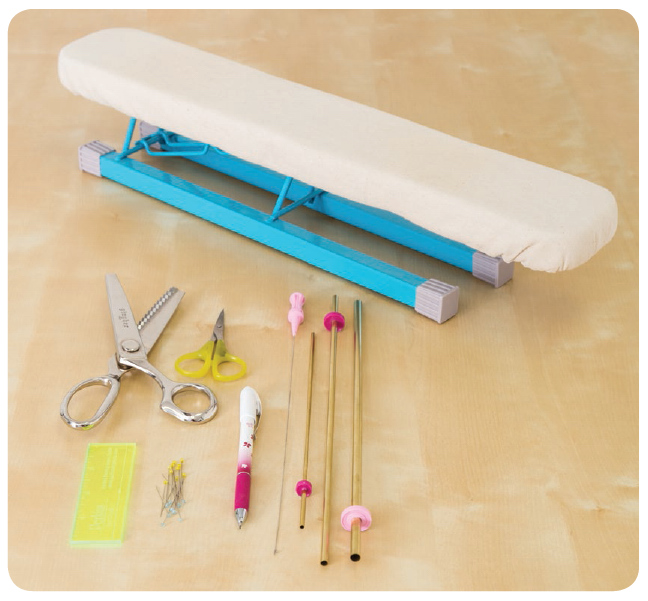
Next page
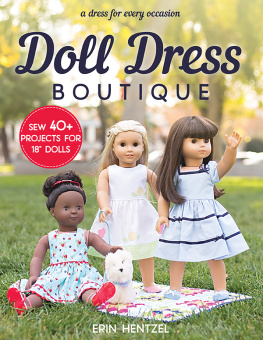
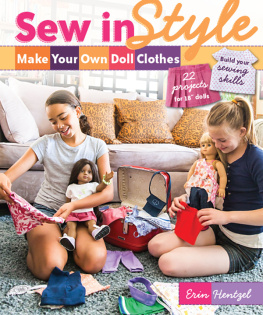


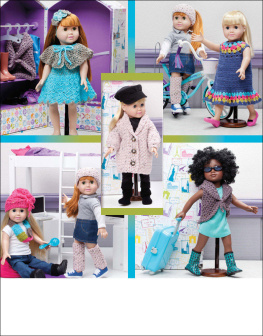
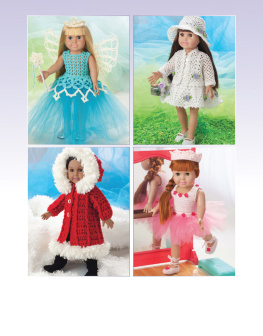
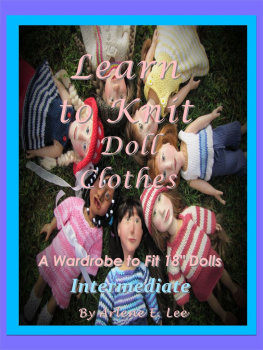
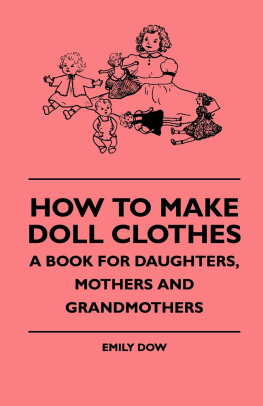
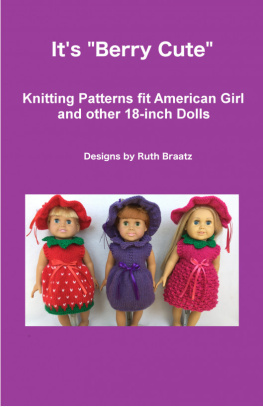

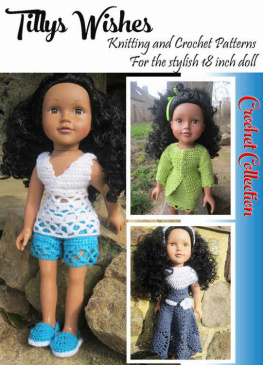

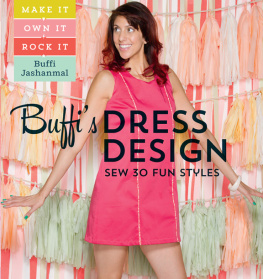
 Dedication This book is dedicated to all doll dressmakers, young and not so young alike. I hope you love sewing these dresses as much as I loved creating them. May this book help you to keep your dollsor the dolls of your daughters, granddaughters, nieces, and loved onesall impeccably dressed. Acknowledgments A warm, heartfelt thanks to my husband, who has always believed in me, and to my children, for their patience, encouragement, and love.
Dedication This book is dedicated to all doll dressmakers, young and not so young alike. I hope you love sewing these dresses as much as I loved creating them. May this book help you to keep your dollsor the dolls of your daughters, granddaughters, nieces, and loved onesall impeccably dressed. Acknowledgments A warm, heartfelt thanks to my husband, who has always believed in me, and to my children, for their patience, encouragement, and love. Advanced beginner
Advanced beginner  Intermediate
Intermediate  Advanced Patterns The dolls shown in this book have a 10 chest and 10 waist. The dresses are designed for the popular brand of 18 dolls, but the more fitted designs may not fit the older versions of these dolls. The patterns are printed on both sides of the pullout sheet, so you will need to make a new copy, either by tracing or photocopying. Print (or trace) the patterns onto freezer-paper sheets. Print (or trace) the patterns onto freezer-paper sheets.
Advanced Patterns The dolls shown in this book have a 10 chest and 10 waist. The dresses are designed for the popular brand of 18 dolls, but the more fitted designs may not fit the older versions of these dolls. The patterns are printed on both sides of the pullout sheet, so you will need to make a new copy, either by tracing or photocopying. Print (or trace) the patterns onto freezer-paper sheets. Print (or trace) the patterns onto freezer-paper sheets.